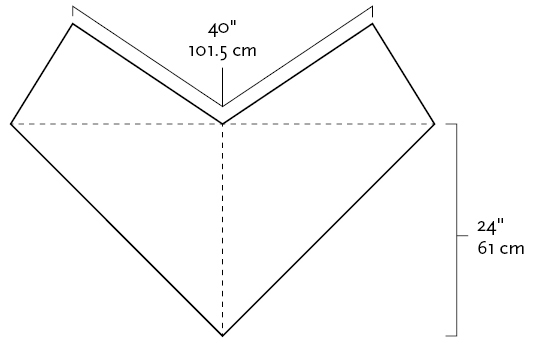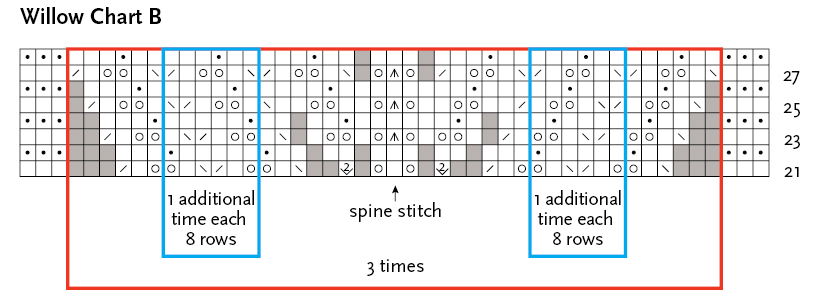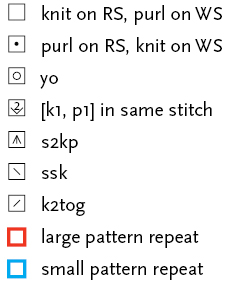
I took inspiration from a doily in Burda Publication #305 from 1974 for this shawlette. No attribution to the designer is included in this out-of-print magazine. Worked as a modified triangle, this shawlette is one of the simpler projects in this book. You can make a larger shawl by adding more row repeats, but be sure to purchase more yarn if you do. I’ve included instructions for using stitch markers to help you keep your place.

About 40" (101.5 cm) wide and 24" (61 cm) long at center back, after blocking; about 30" (76 cm) wide and 19" (48.5 cm) long at center back, after relaxing.
Laceweight (#0 Lace).
Shown here: Pagewood Farms U-Knitted Nations Artesana (100% merino; 545 yd [498 m]/50 g): Army Girl, 1 skein.
U.S. size 3 (3.25 mm): 32" (80 cm) circular (cir).
Adjust needle size if necessary to obtain the correct gauge.
About 8 g of 8/0 Japanese seed beads (shown in Toho gold-lined AB peridot); 12" (30.5 cm) of smooth waste yarn for provisional cast-on; two stitch markers (m; optional); size 14 (0.75 mm) steel crochet hook, or size to fit beads; size 4 (2 mm) steel crochet hook for bind-off; tapestry needle; flexible blocking wires; T-pins.
13 sts and 15 rows = 2" (5 cm) according to Willow Chart B, relaxed after blocking.
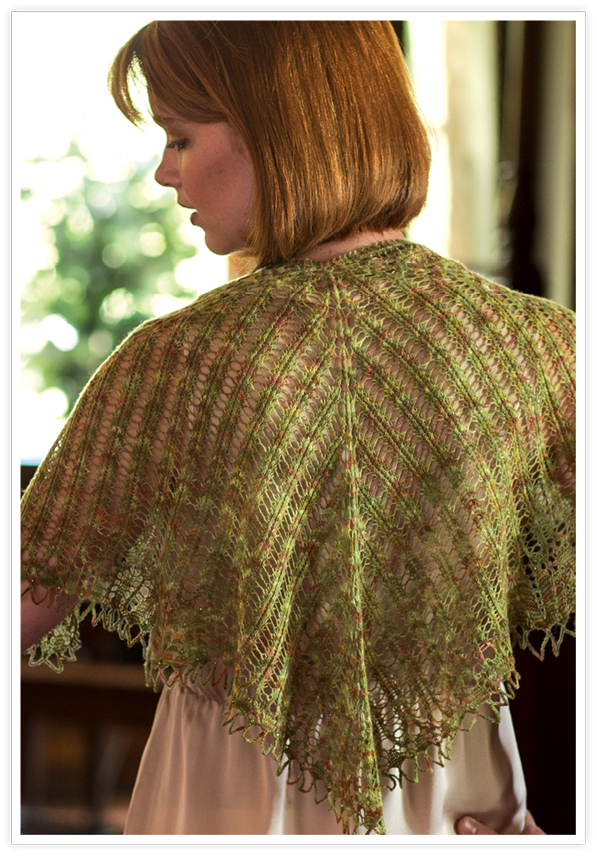
Using a provisional method (see Techniques), CO 3 sts.
Knit 6 rows—3 garter ridges. Do not turn after working the last row.
Turn work 90 degrees and, working into each garter bump, pick up and purl (see Techniques) 3 sts along one selvedge—6 sts total.
Carefully remove waste yarn from provisional CO and knit the 3 exposed sts—9 sts total.
Beg with Row 1, work Willow Chart A as foll:
Row 1: (RS) K3, place marker (pm), *yo, k1, yo; rep from * 2 more times, pm, k3—15 sts.
Row 2: (WS) K3, slip marker (sl m), purl to next m, sl m, knit 3.
Cont in this manner, working Rows 3–20 of Willow Chart A—87 sts.
Work Rows 21–28 of Willow Chart B 9 times—411 sts.
Adding beads with the smaller crochet hook (see Techniques) as specified, work Rows 29–46 of Willow Chart C—640 sts.
Adding beads with the smaller crochet hook as specified, work Rows 1 and 2 of Willow Border chart—783 sts.
Using the larger crochet hook, use the gathered crochet method (see Techniques) to BO as foll: gather 3 sts, chain 10, [gather 6, chain 10] 2 times, gather 7, chain 10, *[gather 6, chain 10] 2 times, [gather 3, chain 10, gather 5, chain 10] 2 times, gather 3, chain 10, [gather 6, chain 10, gather 3, chain 10] 18 times, [gather 5, chain 10, gather 3, chain 10] 2 times, [gather 6, chain 10] 2 times, gather 7, chain 10, gather 6, chain 14, gather 12, chain 14, gather 6, chain 10, gather 7, chain 10; rep from * once, [gather 6, chain 10] 2 times, [gather 3, chain 10, gather 5, chain 10] 2 times, gather 3, chain 10, [gather 6, chain 10, gather 3, chain 10] 18 times, [gather 5, chain 10, gather 3, chain 10] 2 times, [gather 6, chain 10] 2 times, gather 7, chain 10, [gather 6, chain 10] 2 times, gather 3.
Cut yarn, leaving a 9" tail. Pull tail through rem loop to secure.
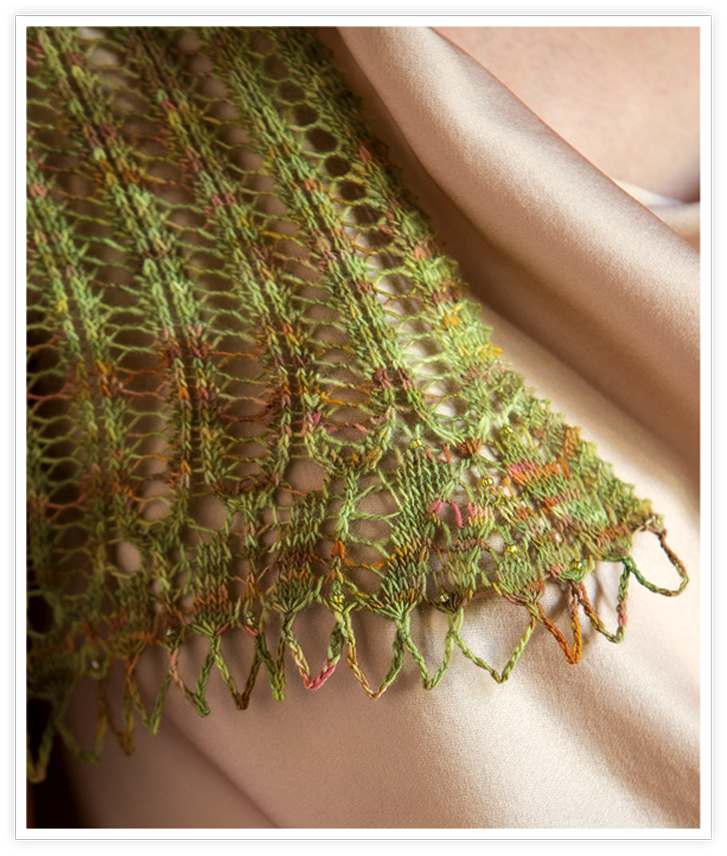
Weave in loose ends but do not trim tails.
Soak in cool water for at least 30 minutes. Roll in a towel to remove excess water.
Weave flexible blocking wires into top garter edges and crochet loops of side edges, omitting ten loops in the middle of each side and five loops at both ends for the corners. Place on a flat padded surface and pin the wires as well as the loops that were omitted from wires (this will form the corners) to finished dimensions.
Allow to air-dry thoroughly before removing wires and pins.
Trim tails on woven-in ends.
